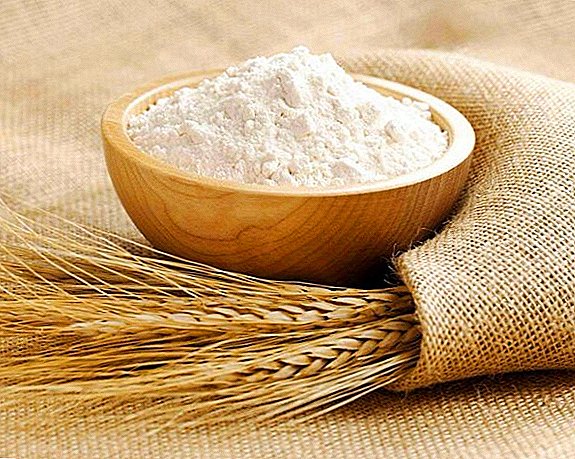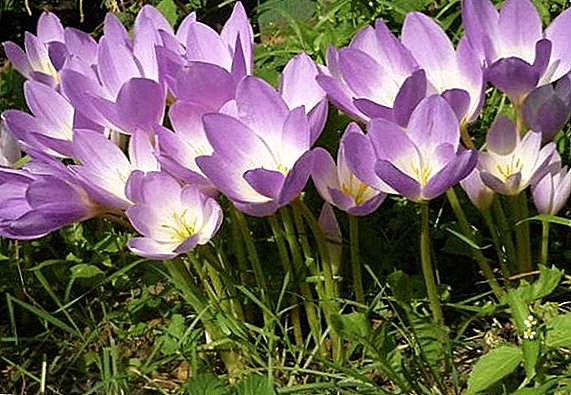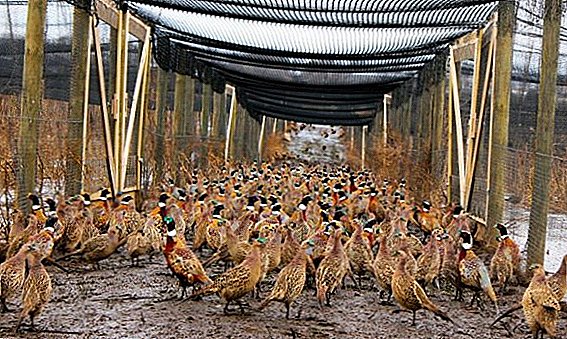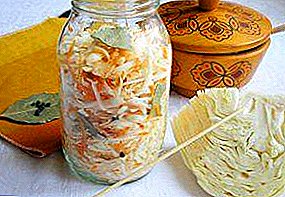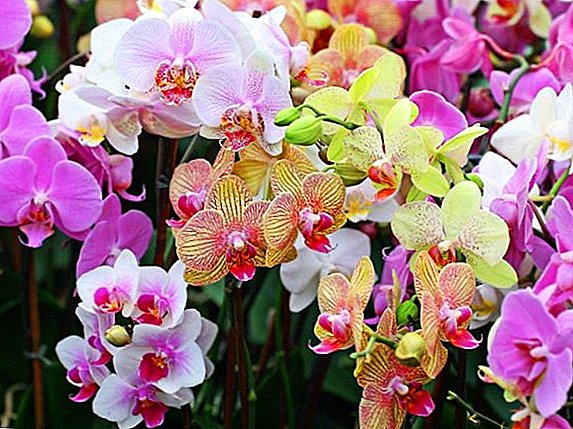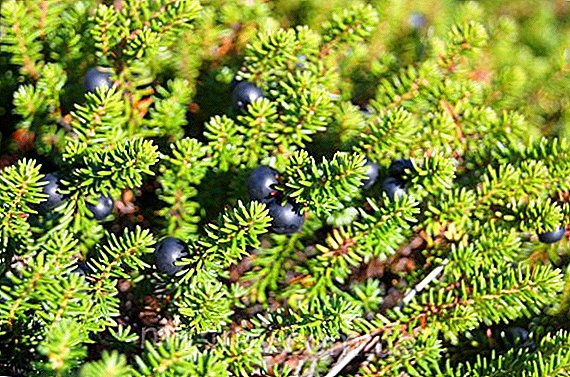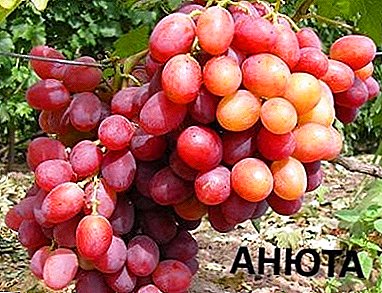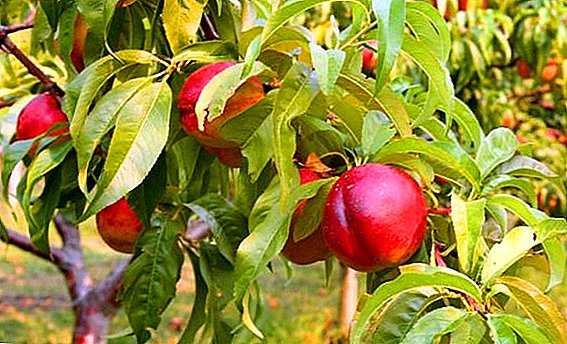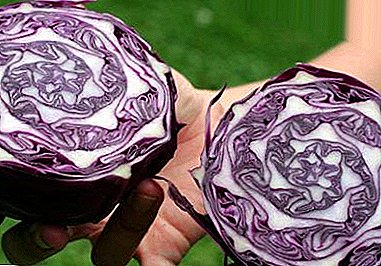
Chinese cabbage or Chinese cabbage is the name for the cruciferous vegetable of the Cruciferous family, which is mainly grown as an annual. Ripe Peking cabbage forms an oblong cylindrical head, at the base the leaves have a white vein, the leaves form a loose socket.
The name of the Beijing cabbage, also known as Chinese salad, is directly related to the territorial origin of this vegetable crop - China. Due to the high content of vitamins, it plays a huge role in healthy nutrition throughout the world. This culture has a delicate taste and texture, and is more suitable for use in salads and as a vegetable side dish, rather than for canned foods or heat treatment.
Characteristics of the species
Brief history of selection
Unusual red Beijing cabbage is presented by Japanese breeders in 2015, it has a deep purple shade of leaves, typical of red cabbage and a great taste, reminiscent of young white cabbage.
Differences
Chinese red cabbage is a type of Chinese salad. Unlike the usual white and green cabbage, it is colored in a purple hue. In addition to its bright and extraordinary color, cabbage also has a rich taste, and vitamin C contains twice as much as in similar crops. The product contains a complex of vitamins and minerals, rich in protein, pectins and amino acids.
The result of successful breeding has also become the possibility of long-term storage of products, which increases the implementation time for cabbage on the market.
Appearance: description and photo



Homogeneous leveled heads of cabbage have an elongated cylindrical shape and crispy, corrugated leaves of saturated purple color. The average cabbage weighs 1-1.5 kilograms. Cabbage has a dense internal structure.
Where and for how much can you buy seeds?
Red Peking cabbage is grown everywhere, in 2018 in Russia, the largest size of plantings was recorded in the Krasnodar Territory. Represent red Beijing cabbage import firms Kitano, Sakata, Enza. Sell seeds of 5-10 pieces in one package can be purchased in specialized stores and garden centers seeds of this culture at a price of about 30 rubles.
Who and what is used for?
For these reasons, red cabbage is actively grown by agricultural enterprises for further storage, processing and sale. Private rural owners also grow red Beijing cabbage, but less often.
Farmers who do not focus on cultivating the appearance of the product are more interested in its quality, since the product reaches the table after a short period of time.
Growing Instructions
Thanks to long-term storage and cold resistance, cabbage is recommended for the second turn. (that is, seedlings are planted in the ground at the end of August). Harvest red cabbage can be grown in any climate zone.
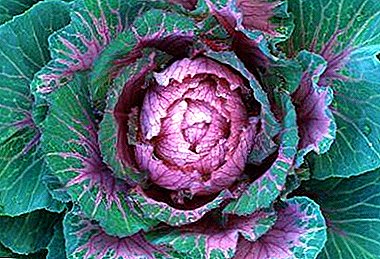 Landing. Seeds for autumnal planting are placed in containers lined with peat tablets at the end of August and moistened periodically with water from a spray bottle. At an optimum temperature of 20-25 C, shoots will be noticeable in a week. Planted seedlings in open ground or greenhouses in a specific pattern, as an adult head will need enough space for growth and development. The land size of 40 x 60 cm is optimal for these purposes (for growing one head of cabbage).
Landing. Seeds for autumnal planting are placed in containers lined with peat tablets at the end of August and moistened periodically with water from a spray bottle. At an optimum temperature of 20-25 C, shoots will be noticeable in a week. Planted seedlings in open ground or greenhouses in a specific pattern, as an adult head will need enough space for growth and development. The land size of 40 x 60 cm is optimal for these purposes (for growing one head of cabbage).- Care. During growth, cabbage requires abundant watering, from one to two times a week, the advantage given to the drip irrigation system. It is recommended to cover the planting with agrofibre or non-woven material for shading plants from the sun, protection from decay during prolonged precipitation and temperature changes.
In order to avoid damage to sprouts by insects, it is necessary to treat the plants with appropriate insecticides. It is recommended to feed plants in the early morning or in the late evening when direct sunlight is excluded. For fertilizer, both root and non-root, use herbal extracts, diluted bird droppings or similar mixtures.
- Cleaning. To prevent rot from appearing and spreading over the crop, it is recommended to cut the cabbages in dry weather and store them in open, ventilated racks without the threat of wetting, or pack them in dry and clean boxes.
- Breeding. Red Beijing cabbage can be grown without seedlings. It is best to choose the soil for planting soil, which previously grew cucumbers, potatoes or carrots.
Before sowing, prepare the wells at a distance of 30 cm from each other, filled with a mixture of humus or compost with a pair of tablespoons of ash.
The soil is watered before and after planting seeds, covered with a layer of ash and covering material. After a week, the first shoots appear.
- Crop storage. Observing all precautions (dry and clean boxes, cool, well-ventilated storage), cabbage is stored in a cool dry place at a temperature of 0-2 C for 4-5 months, periodically checking the leaves for signs of rot.
Analogs and similar varieties
Like any crop grown from year to year, Chinese cabbage has many subspecies and varieties. Anyway, they all have some similarities with red Peking cabbage - some form a cabbage, others delicate taste or an amazing color. There are main varieties:
- Victoria. The head is cylindrical, elongated, the leaves have a light green color. This type is even suitable for heat treatment. It has a pleasant fresh aroma.
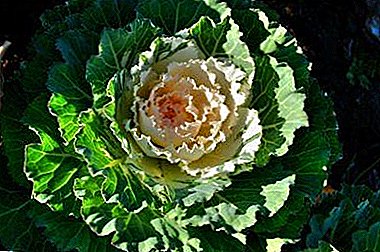 Orange Mandarin. Like the red peking, the variety is surprising in color: a pronounced orange tinge in the middle of the head. The fruits of the variety themselves are small - they weigh about 1 kg. But this species is frost-resistant and can be grown even in Siberia.
Orange Mandarin. Like the red peking, the variety is surprising in color: a pronounced orange tinge in the middle of the head. The fruits of the variety themselves are small - they weigh about 1 kg. But this species is frost-resistant and can be grown even in Siberia.- Marfa. Heads of large, rounded shape. Heads weigh about one and a half kilograms, broad fleshy leaves have a pleasant taste.
- Garnet. One of the largest varieties - the weight of the head can reach 2.5 kg! The species has oblong, dark green leaves tightly pressed to each other.
- Vesnyanka. Ripens most quickly - a month after sowing seeds, small, juicy heads can be eaten.
Diseases and pests
In the period of development and growth of the plant may be subjected to various diseases and attacks of insects.
- In conditions of low temperatures, strong crowding of plants and high humidity of the air, the disease “black leg” appears. The stem turns black and narrows, the access of nutrients to the leaves is stopped, and the escape may die.
- High humidity, poor quality soil or seeds can cause various bacterial diseases in which the plant turns yellow, the head is reduced in size, the leaves dry out.
Important! In order to avoid deformations, the ground for seedlings is calcined in the oven, disinfected with special preparations, and after planting the seeds, the soil is covered with ashes.
- Regular inspection of cabbage leaves for early detection of brown spots and greyish bloom can prevent healthy plants from spreading mold and rot. As a preventive measure, plantings should be sprayed with drugs with a high content of fungicides.
- Of insects, the most dangerous for young tender plants are small bugs and fleas - they suck the sap from the leaves, which leads to a slow wilt and death of cabbage.
- At any stage of growth, caterpillars that gnaw leaves and cause rotting with their secretions are especially dangerous. Deep and thorough plowing of the bed, as well as the treatment of plants with appropriate insecticides, give positive results.
In order for Beijing red cabbage to grow and develop in a comfortable environment, you need to carefully read the care recommendations and follow the instructions.
Recipes
Kimchi Salad
 A traditional dish made from Peking cabbage is kimchi salad. This dietary dish is quite spicy, consisting of pickled vegetables, and primarily Peking cabbage.
A traditional dish made from Peking cabbage is kimchi salad. This dietary dish is quite spicy, consisting of pickled vegetables, and primarily Peking cabbage.
Breeding a variety of red cabbage allowed to add bright colors and originality to dishes. There are more than 100 varieties of kimchi, which differ in ingredients, region of preparation, salting time, preparation technology.
Ingredients for "Kimchi":
- several heads of red Peking cabbage;
- 1 cup coarse salt;
- 2 liters of water;
- a mixture of hot pepper and garlic to taste.
Cooking:
- After cleaning the upper leaves, the cabbage head must be cut lengthwise and rinsed thoroughly.
- Fold the leaves in a bowl, add water, add salt and leave, covered with cling film.
- When the cabbage is infused (for two days), it is important to wash it and rub each leaf with a mixture of pepper and garlic.
- The vegetable processed in this way is left at room temperature for 24 hours, so that the juice is released.
- And finally, the dish must be kept for several days in the refrigerator for better impregnation. Before use, cut the kimchi into pieces 3-4 cm long.
In various variations, it is allowed to add pickled onions, peeled and grated ginger, Korean carrots and other ingredients to the dish.
Almond Salad
 As a less spicy dish with a spicy twist, you can make a salad from red Peking cabbage with almonds.
As a less spicy dish with a spicy twist, you can make a salad from red Peking cabbage with almonds.
Ingredients for Almond Salad:
- 1 large carrot;
- head of red Peking cabbage;
- 1 medium red onion;
- 2 tbsp. l fresh ginger, diced;
- 50 grams of dried cranberries;
- 50 g of ground almonds;
- 2 tbsp. l fried sesame;
- 1 tbsp. l apple cider vinegar;
- 2 tbsp. l soy sauce;
- vegetable oil.
Refueling: Mix 3 tbsp. l lemon juice, 1 tbsp. l honey, season with salt and ground black pepper.
Cooking:
- Thinly chop cabbage. Grate carrots. Mix carrots and cabbage, pour the dressing and leave for 10 minutes.
- Fry ginger and chopped red onion in a frying pan in vegetable oil for 5 minutes, add almonds and cranberries, keep on fire for another 2 minutes. Add vinegar, soy sauce and simmer for 3 minutes.
- Mix the contents of the pan and cabbage-carrot mixture, sprinkle with sesame and serve.
You should not avoid experimenting with Chinese cabbage in everyday dishes - in some diets, its leaves are even used instead of bread.
Peking cabbage is rich in protein, vitamins and microelements. Red cabbage is nutritious and very helpful. Red Beijing cabbage on top of everything else can serve as a bright decoration of the dish and the table as a whole. It plays an important role in the culture of healthy eating and does not require complex procedures for breeding and cultivation.


 Landing. Seeds for autumnal planting are placed in containers lined with peat tablets at the end of August and moistened periodically with water from a spray bottle. At an optimum temperature of 20-25 C, shoots will be noticeable in a week. Planted seedlings in open ground or greenhouses in a specific pattern, as an adult head will need enough space for growth and development. The land size of 40 x 60 cm is optimal for these purposes (for growing one head of cabbage).
Landing. Seeds for autumnal planting are placed in containers lined with peat tablets at the end of August and moistened periodically with water from a spray bottle. At an optimum temperature of 20-25 C, shoots will be noticeable in a week. Planted seedlings in open ground or greenhouses in a specific pattern, as an adult head will need enough space for growth and development. The land size of 40 x 60 cm is optimal for these purposes (for growing one head of cabbage). Orange Mandarin. Like the red peking, the variety is surprising in color: a pronounced orange tinge in the middle of the head. The fruits of the variety themselves are small - they weigh about 1 kg. But this species is frost-resistant and can be grown even in Siberia.
Orange Mandarin. Like the red peking, the variety is surprising in color: a pronounced orange tinge in the middle of the head. The fruits of the variety themselves are small - they weigh about 1 kg. But this species is frost-resistant and can be grown even in Siberia.